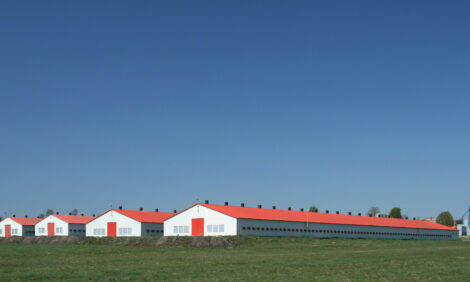



Performance Traits Best Measure of Animal Welfare
US - It is time to recognize what farmers have known for generations--the highly productive animal will be the animal that appears to be experiencing low stress, says a Department of Animal Sciences professor in a new journal article."An important issue in animal agriculture nowadays is the public demand for evidence that animals on farms and ranches are being treated humanely, that animal state of being (ASB) is high most of the time," explains Stan Curtis in the most recent issue of The Professional Animal Scientist.
"As important as this question is, scientists have yet to reach consensus as to how to accomplish that task. It is an unsettled area of knowledge that is seriously in need of more concerted attention."
It is not possible, Curtis notes, to objectively measure an animal's feelings in the laboratory, let alone in a production setting.
"The community of animal-welfare scientists should be enlarged to include more people specializing in state-indicative animal traits in addition to behavioral and cognitive ones,"
Stan Curtis, Department of Animal Sciences professor.
"It is the interpretation of such observations of behavior patterns putatively indicative of negative feelings where the 'feelings approach' is still wanting as to its practical usefulness on farms and ranches," he says.
"Therefore, others advocate more objectively measurable animal-performance traits as more valid indicators of ASB today."
Curtis writes that what cannot be measured cannot be managed.
"We can directly, objectively measure productive and reproductive performance but not feelings (e.g., suffering); and performance reductions are early, sensitive indicators that ASB is being compromised."
In the absence of an adequate scientifically informed understanding of its conscious feelings, the best single set of measurable--hence, manageable--indicators of that animal's state of being will be its rates of productive and reproductive performance relative to its predicted potential to perform.
"The community of animal-welfare scientists should be enlarged to include more people specializing in state-indicative animal traits in addition to behavioral and cognitive ones," he says.
Farmers have long recognized the effectiveness of performance as a measurement of ASB, he adds.
"They know that--all other things being equal--the highly productive animal will be the animal that appears to be experiencing low stress and enjoying a high state of being," he said. "If scientists would recognize this and more attention were accorded the performance axiom, then the recognition of performance as an indicator of ASB would have been resurrected from an unfortunate hiatus that has lasted for several decades.
"The performance axiom would experience a Cinderella moment."
If progress is to be made in the assessment of ASB, Curtis concludes, the importance and use of objective measures of animal performance must be markedly increased.








